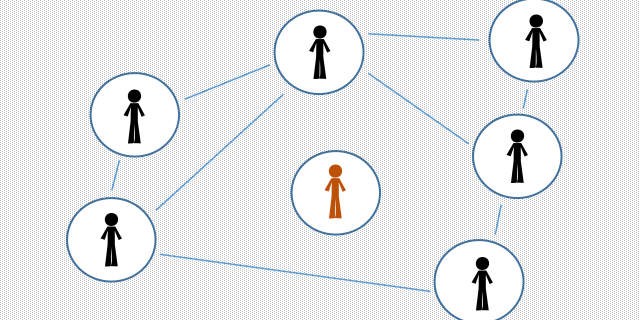
By
Nancy Newall and Verena Menec
August 2021
Print Version
What you need to know
The mandated restrictions on social contact in the face of the COVID-19 pandemic have no doubt made social isolation a household name. By any measure or scale, most of us experienced social isolation due to these restrictions on our ‘in-person’ social contact and social activities. Many of us felt lonely as our social reality did not meet our needs. But how isolated and lonely were Canadians before COVID-19?
Why this research is important
There is an extensive research literature showing that social isolation and loneliness are associated with poorer physical, cognitive, mental, and social well-being. Understanding the prevalence of social isolation in the general population or particular sub-populations is therefore important for policy and program planning. The present study compared different indicators of social isolation using national data from Canadians aged 45+. The statistics within can now serve as a baseline for pre-COVID-19 levels of loneliness and isolation among Canadian adults.
How the research was conducted
The data used for this study derive from the baseline tracking cohort (N=21,241) of the Canadian Longitudinal Study on Aging (CLSA). With its launch in 2010, the CLSA is a nationally representative sample of Canadian adults aged 45–85 who will be tracked over 20 years. Data collected from participants on adult development and aging is wide-ranging (e.g., demographic, health, biological, physical environment, psychosocial, etc.).
Defining social isolation as low in-person social contact and social activities, we created a 5-item measure of social isolation (living alone; infrequent visits with family, children, friends/neighbours; low social participation). We also examined other measures, including a single-item measure of living alone (yes/no), loneliness, as well as aspects of social support (e.g., do you have a confidant; do you have someone to help if you were confined to bed). We compared different measures of social isolation in terms of prevalence as well as correlations with health and well-being.
What the researchers found
We found that 17.5% of Canadians aged 45–85 live alone. This figure rises drastically when we consider females aged 65+ (41% live alone). Interestingly, though females were more likely to live alone, they were not more likely to be socially isolated compared to males, as females generally had higher social activity and contact with their social network.
Results showed that 5.8% of adults aged 45–85 years were socially isolated, defined as having little to no in-person contact with others and low social activities. Adults aged 65+ (8.4%) were more likely to be isolated than adults aged 45–64 (4.6%).
When asked about loneliness, 10.4% reported feeling lonely often or always (3+days per week). Almost a quarter (23%) of participants indicated they lacked help when needed (help if confined to bed), and 15.5% reported lacking a readily available confidant. There was little difference between age groups on the loneliness and social support indicators.
How this research can be used
The public health effort relating to the COVID-19 pandemic (mandated 6-feet physical distancing; masks; little to no social gatherings) has changed people’s social world significantly.
The statistics presented within the present study can serve as baseline levels of loneliness and isolation among Canadian adults before COVID-19. They also highlight that before COVID-19, levels of social isolation were quite low in the general population of adults and among the aged 65+ population, as most older adults have highly integrated social networks of family, friends, and others (Harasemiw et al., 2018). Prevalence estimates can help us to determine particular populations in which social isolation is higher and help guide outreach to these groups. ‘Living alone’ as a social isolation indicator has its limitations, yet can be a useful and easily found (e.g., census) gauge. For example, over the past year, those living alone were at times allowed specific allowances (e.g., 1–2 home visitors) to help mitigate the effects of other mandated social restrictions. As restrictions to our in-person social interactions continue to ease, it will be important to continue to reach those most isolated in our communities.
Drs. Menec and Newall are leading the Targeting Isolation project which helps train professionals to identify and refer isolated older adults to appropriate resources. For more information visit targetingisolation.com.
Editor: Christiane Ramsey RamseyC@Brandonu.ca
About the Researchers
Keywords
- loneliness
- older adults
- social isolation
Publications Based on the Research
Newall, N. E. G., & Menec, V. H. (2020). A comparison of different definitions of social isolation using Canadian Longitudinal Study on Aging (CLSA) data. Ageing and Society, 40(12), 2671–2694. https://doi.org/10.1017/S0144686X19000801
Editor: Christiane Ramsey
Read more BU Research
Research at Brandon University follows comprehensive policies designed to safeguard ethics, to ensure academic integrity, to protect human and animal welfare and to prevent conflicts of interest.


